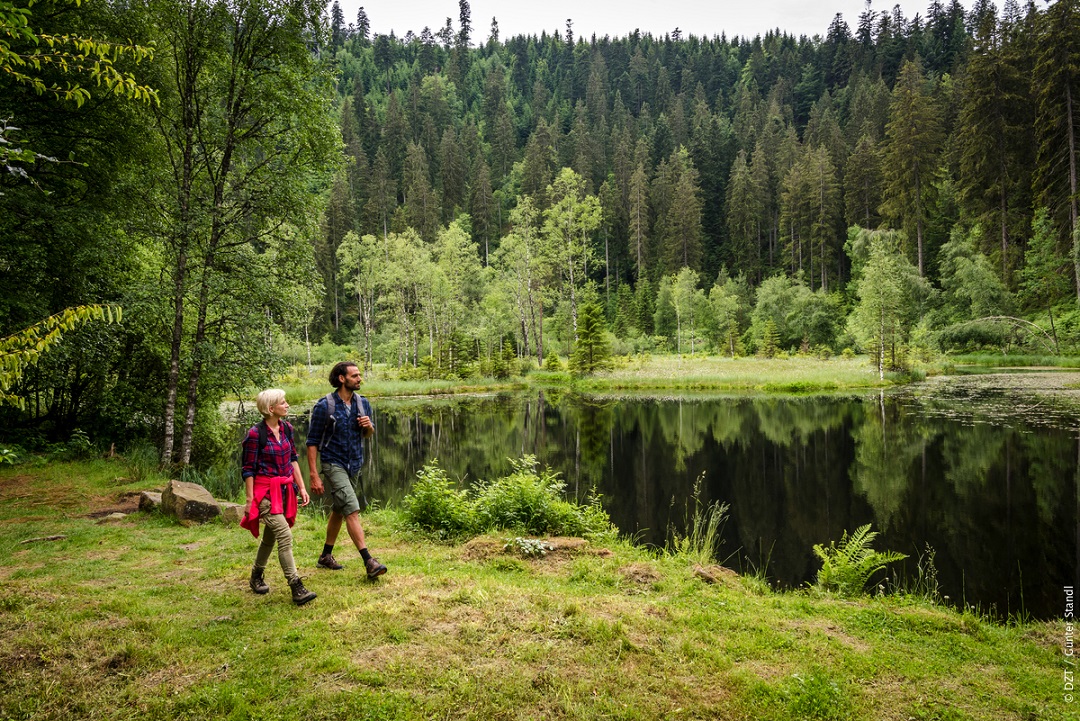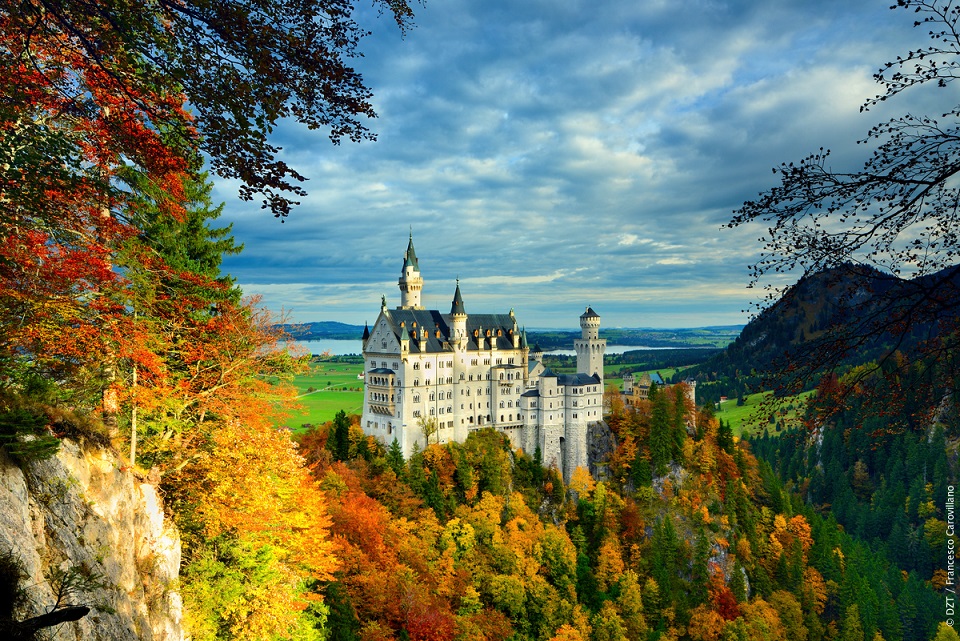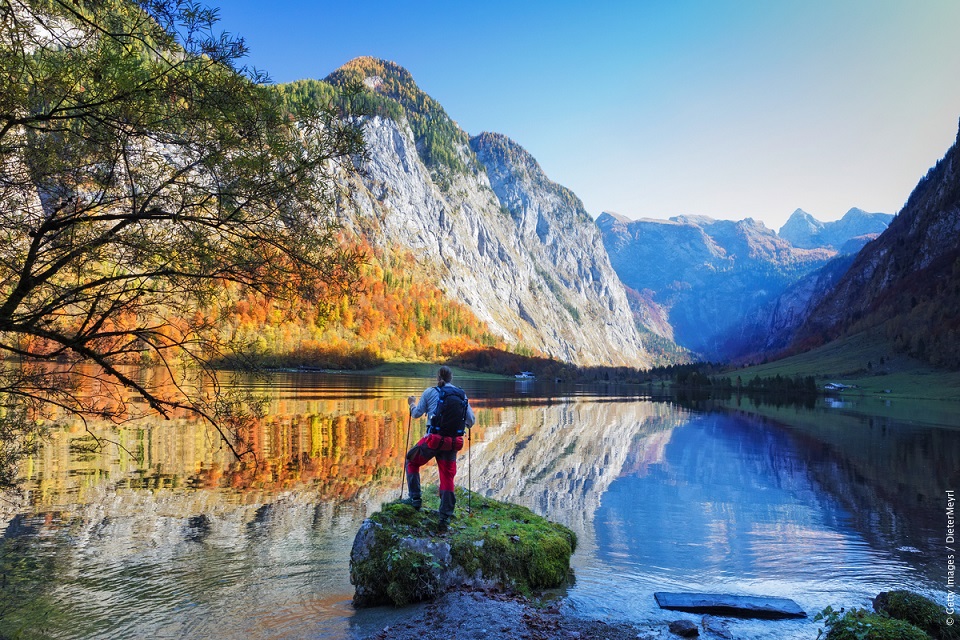Almost a year after the fall of ‘Berlin Wall’ on November 9, 1989, the German reunification on October 3, 1990, marked the launch of ‘Destination Germany’ to millions of international tourists, who are searching for new a travel destination with diverse nature and culture experiences.
 After the unification, considerable public and private funds were injected to the tourist infrastructure throughout Germany, in addition to the investment of the Federal Government with approximately 40 billion euros in roads and railway connections*. Furthermore, national and international hospitality companies as well as independent entrepreneurs established a competitive hospitality and catering sector. Today, Germany has more than 50,000 accommodation facilities inclusive of camping providing more than 3.7 million guest beds throughout the country**.
After the unification, considerable public and private funds were injected to the tourist infrastructure throughout Germany, in addition to the investment of the Federal Government with approximately 40 billion euros in roads and railway connections*. Furthermore, national and international hospitality companies as well as independent entrepreneurs established a competitive hospitality and catering sector. Today, Germany has more than 50,000 accommodation facilities inclusive of camping providing more than 3.7 million guest beds throughout the country**.
Furthermore, the medium size travel and tourism companies in Germany contributed to the German economy with 105 billion Euros (four percent) and provided around three million jobs***. In 2019, Germany was named again the second most popular travel destination for Europeans, – after Spain and ahead of Italy and France with 60.8 million trips****.
“Thirty years of German reunification impressively demonstrate how closely economic growth and location development contribute to tourism attractiveness,” Petra Hedorfer, Chief Executive Office, German National Tourist Board (GNTB), said.
Strong position for Destination Germany in the international competition
The German National Tourist Board (GNTB) promoted Destination Germany worldwide through a combination of cities and culture with the highlight of nature and recreation.
Today, Germany is the preferred cultural and city travel destination in Europe on a year-round basis, with 30 years of investment in lavishly restored sites of historical and cultural significance in the new Federal States, as well as new tourist attractions in the cities of the old Federal States. Key attractions include Germany’s 46 UNESCO World Heritage Sites, where one third of these sites are situated in the new Federal states.
In addition, Germany continues to gain attention as a nature and activity travel destination through its vast network of hiking trails which total more than 200,000 kilometres, and 70,000 kilometres of long-distance bike trails. More than 30% of the nature landscape in Germany are considered nature reserves and protected areas.

Nature and landscape remain to be among the TOP 4 decision criteria for international tourists, when choosing to travel to ‘Destination Germany’. Therefore, Germany has reached the second place a nature travel destination among the worldwide travel destinations of Europeans. Furthermore, Germany is considered in international business travel tourism, as the world’s number 1 trade fair location and as Europe’s leading conference and congress destination.
Petra Hedorfer commented: “We now have to maintain this competitive position in incoming tourism with a coronavirus recovery strategy that builds on the strengths of the brand of Destination Germany and invites with high-quality offers,”
Commitment to sustainability
In order to expand the ingredients in the core of the brand and to build up future opportunities for Germany as a travel destination, the German national Tourist Board (GNTB) builds on the country’s balance between economy, ecology and social responsibility, which are at the heart of the sustainability initiative for marketing Germany as a travel destination.
This is demonstrated by strong positions such as fifth place in the 2020 Sustainable Development Goals Index (SDG), which tracks the sustainability successes of more than 190 countries in an international comparison. Four major German cities are also listed among the top 20 in Arcadis’ Sustainable Cities Index. In the Travel & Tourism Competitiveness Index of the World Economic Forum, Germany has maintained the top positions in environmental aspects for several years.
Challenge Corona
In the spring of 2020, the outbreak of the Corona pandemic brought global travel to an abrupt standstill. In the 30th anniversary of the German reunification, German incoming tourism is also facing an unprecedented challenge. Here, analyses by Tourism Economics show that international overnight stays will decline by at least 51 percent compared to 2019, which is translated to 44.1 million overnight stays by international travellers similar to the year 2004.
According to the Anholt-Ipsos Nation Brands Index (NBI) 2020, Germany is one of the top 20 countries, where travellers revealed they would feel most comfortable visiting Germany during the next five years Germany. Furthermore, the survey has confirmed Germany’s leading position in crisis management and health system.
* Source: Federal Ministry of Transport and Digital Infrastructure, 2016 ** Source: destatis, Stat. yearbook 2019 *** Source: BMWi. **** Source: IPK International 2019









